So, I’ve been on my vegan diet now (the Dr. John McDougall plan—truly excellent) for just a bit over a year now and I’ve lost and kept off 33 pounds! I still have a bit more to lose, despite the fact that nearly everyone around me says I’m way too thin (I’m not!) and despite the fact that nearly everyone around me says that this diet is “unhealthy”. There are some people in my circle of friends and family who are somewhat okay with not eating meat and dairy and fish, yet they completely disagree with me staying away from olive oil (or oils of any kind), and even healthy fats found in nuts, seeds, avocados and salmon. I don’t want to go into the argument about whether my vegan diet is healthy or not (at least right now), but what I do want to explore is their comments about fats and why so many of the well known vegan diet experts are extremely cautious, and warn against eating even much of these “healthy” fats.
First, let’s explore the difference between fats in general: From my layman’s perspective, I’ve learned that there are two generic types of fats. The first one being saturated fats and the second is unsaturated. The big and obvious difference between these two is that saturated fats are commonly solid at room temperature (like butter) and the unsaturated ones remain liquid. Nearly all doctors and nutritionists agree that some fat is healthy for you; the question is how much is considered healthy and similarly, which types are the health promoting ones. Generally speaking, the unhealthy types are the saturated fats and these are found primarily in meat, poultry and dairy and a huge variety of processed foods. In general, these can lead to fatty deposits (plaque) in blood vessels causing the hardening of the arteries (arteriosclerosis) and in general they tend to raise LDL cholesterol (the unhealthy kind). Unsaturated fats, on the other hand, are those in olives, avocados, nuts and seeds, some fish, and to a much more minimal amount, the fats found in most plants and vegetables. This type of fat is far less likely to raise cholesterol levels and far less likely to increase one’s risk of heart disease and high cholesterol levels.


So the real question is how much fat is needed in a healthy diet and does it matter whether the fat is saturated or unsaturated? A very quick google search of this question leads to literally dozens of vastly different opinions. For example, the American Health Association (AHA) indicates that saturated fat should make up less than 6% of your daily caloric intake. There are other organizations that say the safe amount is at 10%. And many of the popular weight loss diets out there go even much higher than this. Let’s go with the AHA and let’s see if the Standard American Diet comes in at approximately this amount.
So, first a little bit of math (sorry!). Assuming an average calorie intake of 2000 calories per day, this would mean that just about 120 calories should be our maximum # of calories for saturated fat. Calculating things further, since there are 9 calories per gram of fat (whereas protein and carbohydrates have just 4 calories per gram), this would mean that we shouldn’t be eating more than 13.3 grams of saturated fat per day (120 calories divided by 9 calories per gram).
For right now, let’s all agree, at least for the moment, that the AHA’s findings are accurate and are healthy for us (a huge number of cardiologists, nutritionists and dietitians would argue that even this number is way too high). So, is it even possible, with the standard American Diet to adhere to this maximum?
What does the standard American Diet look like? For those who are not weight conscious and for those who eat conventional, fast food fare (and who doesn’t these days!), let’s say you have the following meals during the day:
Breakfast:
- Bacon, Egg, and Cheese Breakfast Sandwich: About 6-8 grams of saturated fat.
- Hash Browns: Approximately 3-4 grams of saturated fat.
- Large Sweetened Coffee: Roughly 0-1 grams of saturated fat.
Lunch:
- Big Mac: Around 9-11 grams of saturated fat.
- Large French Fries: Approximately 19-24 grams of saturated fat.
- Large Soda: Roughly 0 grams of saturated fat.
Snack:
- Chocolate Chip Cookie: About 2-4 grams of saturated fat.
Dinner:
- 6-Piece Chicken McNuggets: Around 4-5 grams of saturated fat.
- Ranch Dressing (for dipping): Approximately 1-2 grams of saturated fat.
- Large Coke: Roughly 0 grams of saturated fat.
Dessert:
- Apple Pie: About 4-5 grams of saturated fat.
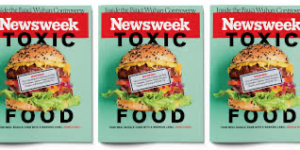


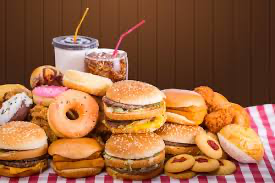
Total saturated fat intake (on the high side because portion sizes are huge in the US): 64 grams!! And this tally takes into consideration ONLY the saturated fat; if we were to add up the unsaturated fat the number would surely exceed a total of 100 grams of fat PER DAY!! For just the saturated fat portion, this is nearly 5 times the maximum amount per AHA guidelines.
Please remember that these estimates can vary and might not represent the exact nutritional content of every meal. Also please remember that I’ve deliberately chosen individuals who regularly eat lots of fast food; those that skip breakfast or have just cereal or toast at home and then go out for lunch would consume maybe 50 grams of saturated fat per day. And even this is nearly 4 times the maximum recommended amount of saturated fat per day! Additionally, please remember that this type of diet is considered very high in added sugars and sodium, and these two factors exacerbate the problems created with too much saturated fat..
It’s no wonder that we have an enormous obesity epidemic here in the US (and now most health practitioners are indicating that his has spread across the globe!). Right now, the estimates from the Harvard University School of Public Health of the overweight population here in the US is at approximately 69% (more than 2/3) of the country and nearly one out of three are obese. To put this in perspective, that means that nearly one hundred and thirty million people here in the US are considered obese (defined as having a BMI-body mass index of over 25). Our eating habits here in the US have created medical costs for hypertension and cardiovascular diseases that are amongst the highest in the world.
Here are some common food choices that Americans regularly eat and the # of grams for each serving. I’ve chosen these because most Americans regularly eat these foods:
- Two slices of Domino’s Cheese Pizza: Approximately 6-8 grams of saturated fat.
- 6-ounce Ribeye Steak: Around 6-9 grams of saturated fat.
- Serving of Full-Fat Yogurt (6 oz): Roughly 4-6 grams of saturated fat.
- Standard Corn Muffin from Starbucks: Approximately 2-4 grams of saturated fat.
- Whopper from Burger King: About 11-13 grams of saturated fat
If we added pepperoni to the cheese slices and asked for extra cheese, the amount of saturated fat in just the two slices of pizza alone would be somewhere between 12-14 grams (100% of max recommended from just two slices of pizza alone!)
Fast food, processed food, cheese, all sorts of dairy, meat and eggs and poultry all have large amounts of saturated fat and despite dietary recommendations from all doctors and health practitioners, Americans are still eating WAY TOO much of these “bad fat” laden foods.
Even worse are snack foods. The “bad” fat content listed below is for very small portions of food. When I used to eat like most Americans, I NEVER stopped at one ounce of Fritos or potato chips (anyone remember the jingle: “I betcha can’t eat just one”). I would have at least triple the amounts of Fritos listed below and that would mean a “simple snack” (one that never really filled me up) had at least 6-9 grams of saturated fat. And with an ice cream desert, I would have, in one simple swoop, the entire maximum amount of saturated fat for the day. Here are the numbers:
- Fritos (1 ounce): About 2-3 grams of saturated fat.
- Lays Potato Chips (1 ounce): Approximately 1-2 grams of saturated fat.
- Snickers Bar (regular size): Roughly 4-5 grams of saturated fat.
- Häagen-Dazs Ice Cream (1/2 cup, various flavors): Generally 5-8 grams of saturated fat
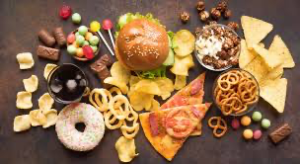
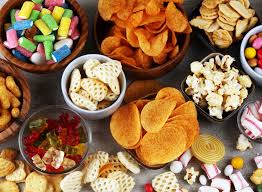
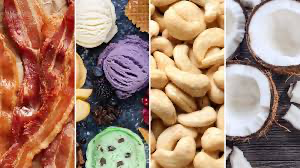
Okay, we’ve now explored the saturated fats and have seen how our levels here in the US are WAY beyond maximum recommendations. Take a look at my next blog post for the unsaturated fat levels of the food we are eating.
